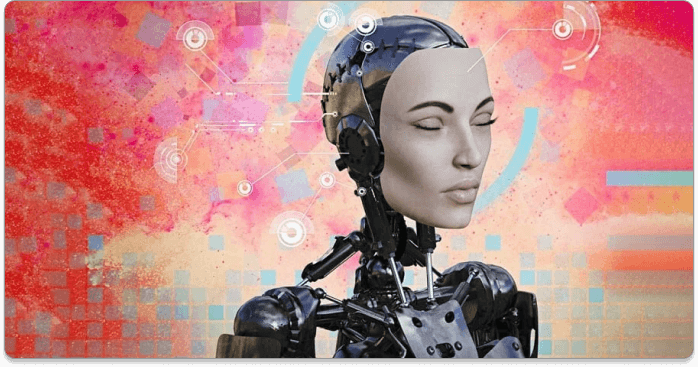The concept of AI used to trigger all types of apocalyptic and utopian fantasies. But those days are now definitely gone, as AI is becoming more and more ingrained into the everyday working life of companies all over the world. Actually, AI has been maturing so fast that the ability to embed AI technology into the core of a company’s business strategy will become a must in the next few years for companies across all industries that aim at keeping and enhancing their competitive advantages. So the question today is not whether or not to become an AI-driven company, but how to do it, and how fast it can be done.

The evolution of Enterprise AI
Thriving throughout an Enterprise AI journey does not only mean leveraging AI for one or two projects, but it implies engaging in a process to scale it out so that it can become the backbone that sustains the whole business strategy in the not-so-distant future.
This is the great challenge that companies are facing today. While not so long ago AI projects were mainly in charge of data scientists, today, it is business units that have taken the lead. Ranging from internal operations to the building of customer-facing products and services, AI is permeating the whole spectrum of companies’ activities. Simplifying contract processing, increasing automation to significantly reduce workload, and scaling business digital abilities are only some of the ways in which AI is fundamentally changing companies’ dynamics.
Among all of these trends, there is one in particular that we would like to highlight here since it’s the one that is currently driving the greatest growth in earnings for companies. This is the reason why some call MLOps “the next big trend” in AI. While machine learning has been growing more complex for years now, creating a lot of expectations around it (at least in theory), companies at the vanguard of AI adoption are thriving to bring its full power to reality, with tools and methodologies evolving faster than ever.
Ultimately, the goal of this evolution -and that of Enterprise AI in general- is not just to optimize some processes but to essentially transform the way a business works at its core. And to do this, companies will need to develop centralized AI strategies aimed at making a massive and positive impact on their ability to achieve their business goals.

Challenges for AI adoption in the immediate future
Still, there is a lot of work to be done in terms of increasing trust in the capacities of AI to make critical decisions. In 1996, when Garry Kasparov faced Deep Blue in a series of chess games, he stated that one of the things that made IBM’s AI so hard to beat was that more than a few of its moves seemed rather unsound and perplexing, at least from a human point of view. Well, this anecdote expresses pretty well the challenges of letting AI get more involved in making business-critical decisions. Since it is not uncommon for AI to baffle human common sense with its conclusions, most of us are probably still not ready to fully accept its involvement in more complex decision-making processes that define a business strategy.
In any case, we have come a long way from the fears of an all-out war scenario between human beings and machines depicted by Hollywood in the 80s and 90s. In fact, reality seems to have taken quite the opposite path, as we slide into a world in which permanent interaction and collaboration between AI and human teams will be required to improve the ability of both companies and individuals to thrive in an extremely competitive market.
Keep reading our blog to learn more about trending topics in disruptive technology and AI Software Development Services.











